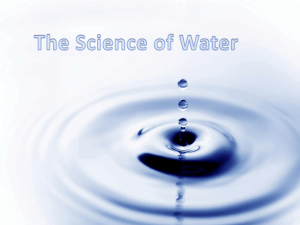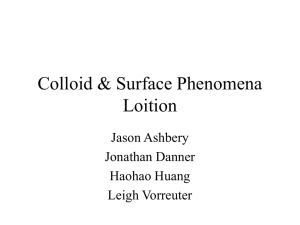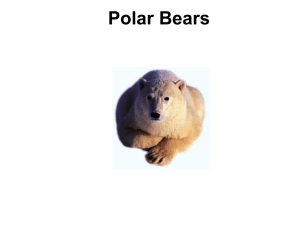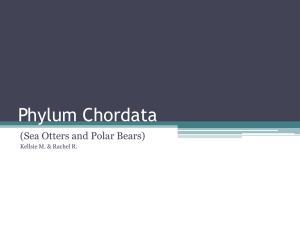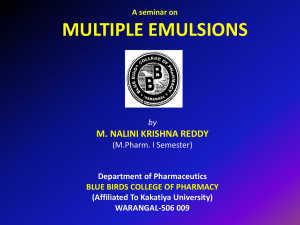File - HAGR Year 10 Science
advertisement
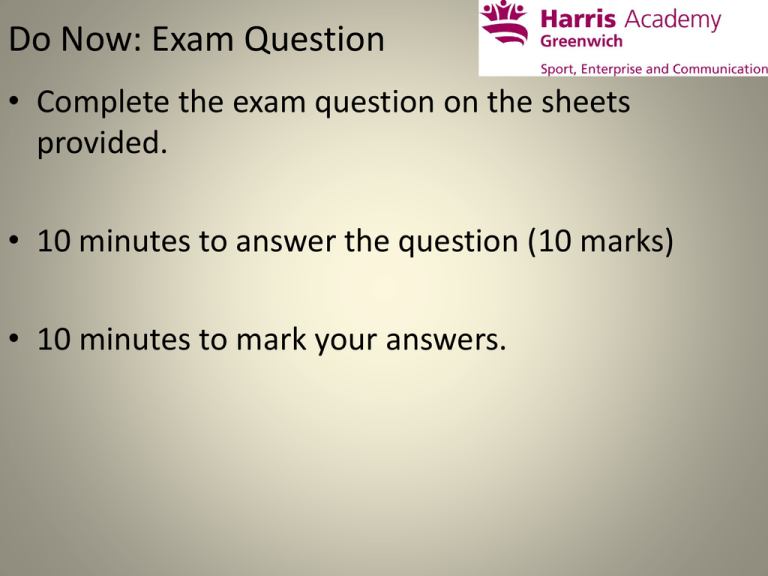
Do Now: Exam Question • Complete the exam question on the sheets provided. • 10 minutes to answer the question (10 marks) • 10 minutes to mark your answers. Emulsions To be able to: Recall how emulsifying agents can help oil and water mixtures to remain mixed (B/A) Give two uses of emulsions (C) Plot a graph or bar chart appropriate to the data collected (HSW B) Picture to words: • Recall how emulsifying agents can help oil and water mixtures to remain mixed (B/A) • Try to explain what is happening in each of these two pictures: Think Pair Share Key Words Dense Float Polar/ionic Non Polar/covalent/ hydrocarbon Immiscible Picture to words: • Recall how emulsifying agents can help oil and water mixtures to remain mixed (B/A) Use the grid below to give yourself a grade for your responses. Statements The oils floats on top of the water This is because the oils and the water don’t mix The oil is less dense than the water so it floats The oil and the water are immiscible The oil is a hydrocarbon The water is a polar/ionic substance The water and oil are immiscible because the polar molecules in the water repel the non polar molecules of the hydrocarbon (oil) Grade C B A A* Emulsions • Give two uses of emulsions (C) • What if we want the oil and water mixture to remain mixed? • We need to use an EMULSIFIER. Exam Tip: You need to be able to name at least two common emulsions. Here are three! Practical • Plot a graph or bar chart appropriate to the data collected (HSW B) • You are going to investigate the action of different emulsifiers. • You must wear goggles. • Follow the instructions carefully to record your results. • When you have finished complete Q1-4 of the analysis then plot your graph. Plot the most appropriate graph/chart for your results. – There is a help sheet available for this – ask if you need a copy. Emulsifiers – the SCIENCE • Recall how emulsifying agents can help oil and water mixtures to remain mixed (B/A) • Emulsifiers are special substances that prevent oil and water mixtures from separating. • They do this because of their structure. Emulsifiers – The Science • Recall how emulsifying agents can help oil and water mixtures to remain mixed (B/A) Water is a polar molecule... • . • It’s really simple... It has covalent (electron sharing) bonds between the hydrogen and oxygen atoms. The oxygen atom has a really strong pull from it’s nucleus (8 protons). This pull causes the electrons in the covalent bond to be pulled towards the oxygen atom. Overall this shifts the balance of charge... There are more negative charges (or electrons) near to the oxygen atom – so this becomes overall slightly more negative. The hydrogens are left with only a proton so they become slightly more positive. Emulsifiers – The Science • Recall how emulsifying agents can help oil and water mixtures to remain mixed (B/A) • Oils on the other hand are long chains of hydrocarbon molecules. • All carbons and hydrogens covalently bonded... • Because there is no oxygen then there are no polar WARNING: Other atoms like N, F, Cl, Br and I make molecules polar molecules. as well • This is the reason why oils and water don’t mix... • Like substances dissolve in like – Salt (an ionic or charged compound) will dissolve in polar liquids like water but not in non polar liquids like oils. – Oils and water don’t mix because water is polar and oils are non polar. Emulsifiers – The Science • Recall how emulsifying agents can help oil and water mixtures to remain mixed (B/A) • So... Non polar hydrocarbons, e.g. Oils, will separate from polar liquids like water. • Enter the emulsifier... • Remember the hydrophilic (polar) head and the hydrophobic (nonpolar) tail... The opposite is true for a W/O type emulsion. The hydrophobic tails help to suspend the droplet in the oil. • In an O/W type emulsion, the hydrophobic tail embeds itself into the oil droplet. • The hydrophilic head pokes out into the water. • The water and the polar head are attracted to each other. • This stops the oil droplet from floating up to the surface of the water. Emulsions Exam Question • Test yourself: 1. Try to complete the exam question from your memory of your note. 2. Use your notes to help you, but now write in a different colour (NOT RED) 3. Mark the exam question using the mark scheme, this time in red and add corrections. The more red pen there is = the more revision you have to do at home. Homework • Check the weebly for your homework: 1. If you did not finish the graph or analysis questions you must do so 2. Download, print and complete the homework sheet on emulsions. All of the homework is due to me next lesson. E Graph drawing Support • Explain the difference between discreet and continuous data. • • • • • There is a link between the type of emulsifier used and the amount of time taken for the mixture to separate. What is the independent variable for this investigation? Does your independent variable have a range of values? (does it have numbers?) Could you select a value that is in the middle of the independent variable and suggest an value for the dependent variable? If there is no range of numbers for your independent variable, what kind of variable is it, discreet or continuous? What kind of graph or chart should you draw form this data? – Think about the type of graph that you could draw, if there are no values between the intervals for the independent variable does this suggest a line graph or bar chart? ISA Graph Marking Criteria • Plot a graph or bar chart appropriate to the data collected (HSW B)




